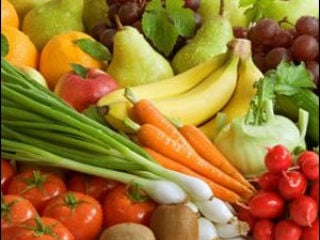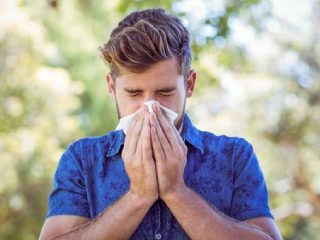Contents
The epidemic disease with the symptoms of rashes on the hands and feet, fever and getting painful blisters in the mouth after the fever is gone is called as ‘hand, foot and mouth’ disease in the modern medical science. Preliminary Ayurvedic remedies on this disease are given below.
1. Ayurvedic perspective
Water becomes ‘Amla Vipaki’ in the rainy season. In Sanskrut language ‘Amla’ means sour. ‘Vipak’ means the change in the taste of food in stomach after digestion. As per the principle of Ayurveda, ‘After digestion, the taste and the qualities of the food changes.’ Our body gets inclined towards increasing the pitta (Bile) as the water becomes Amla Vipaki. Water is also contaminated with microscopic germs during the rainy season. Digestive power also reduces due to continuous rains. Therefore, the epidemic diseases quickly spread in the rainy season. ‘Getting rash on the skin’, is the sign of increase in the pitta, while getting fever is the sign of low digestive power and improper digestion of food.

2. Preliminary remedies as per Ayurved
2 A. Juice of Adulsha (Malabar nut)
One tablespoon full of juice extracted from the leaves of Adulsha or Neem should be consumed for 7 days twice a day (once in the morning and in the evening). If there is no fever, then this juice should be mixed with quarter tablespoon of ghee (Clarified butter) before consuming. In case of fever, only the juice should be consumed. Leaves should be cleaned thoroughly before extracting the juice.
2 A 1. Procedure for extraction of juice from Adulsha leaves
Just by pounding the leaves of Adulsha one cannot extract juice from them. Adulsha leaves should be slightly heated on a pan before extracting the juice. One of the leaves should be slightly warmed and then should be pounded in a pot and then the juice should be extracted. Juice can be easily extracted if a little water is added. It is okay if everyone in the family consumes this juice a little; but it should be consumed only for 7 days. Adulsha is very beneficial to prevent the epidemics related to fever. During earlier times Ayurvedic doctors used to give the decoction of Adulsha and Jyeshtamadh (Glycyrrhiza glabra, commonly known as licorice or liquorice) to prevent the epidemic of disease called ‘Devi (Devic’s disease called Neuromyelitis Optica or NMO, is a central nervous system disorder that causes inflammation in nerves of the eye and the spinal cord)’.
2 A 2. An alternative to the juice of Adulsha leaves
‘Vasa churna (Fine powder of Adulsha)’ made by Sanatan is also available. When it is not possible to extract juice of Adulsha leaves, then quarter tablespoon of this churna should be mixed with little water and consumed.
2 A 3. Prescription for the children below 3 years of age
Juice or churna should be given in the half of the quantity given above.
2 B. Medicinal waters for the bath
Leaves of the Adulsha or Neem should be added into the hot bathing water for children.
3. Diet
3 A. What should be given to eat ?
In case of fever, don’t feed small children if they are not feeling hungry. Warm water should be given to drink from time to time. If they demand for food, then the lentil or the broth made from the Mooga (Green gram) or Toor (Pigeon pea) should be given while it is warm. Mooga or Toor reduces the pitta. Some hunger should be kept as is. Children should not be fed stomach full. Later whenever they feel hungry and if it is meal time, then they should be given rice and lentil made from Toor and if they feel hungry at other times, then semi-liquid food items prepared from Mooga should be given to them. Regular diet should be resumed only when they feel completely well.
3 B. Perspective
As per the modern medical science, we have fever when our immunity system is fighting with the microbes. At that time if regular diet is consumed then the body requires to spend high amount of energy to digest the food due to which it is not left with adequate energy to fight the disease. Therefore, Ayurved prescribes to do fasting, meaning avoiding to eat anything during fever. Regular diet should not be consumed right after fasting. A light diet that is easy on digestion should be consumed in the beginning and then the diet should be increased incrementally.

 For healthy living avoid food that can cause antagonism due to contra-indications
For healthy living avoid food that can cause antagonism due to contra-indications Root cause of the diseases and their Divine treatment
Root cause of the diseases and their Divine treatment Are you distressed with constant sneezing ?
Are you distressed with constant sneezing ? Tips for eye health and maintaining good vision
Tips for eye health and maintaining good vision Practice this to inculcate a healthy habit of eating only twice in a day !
Practice this to inculcate a healthy habit of eating only twice in a day ! Some Ayurvedic medicines that can be used in fever
Some Ayurvedic medicines that can be used in fever